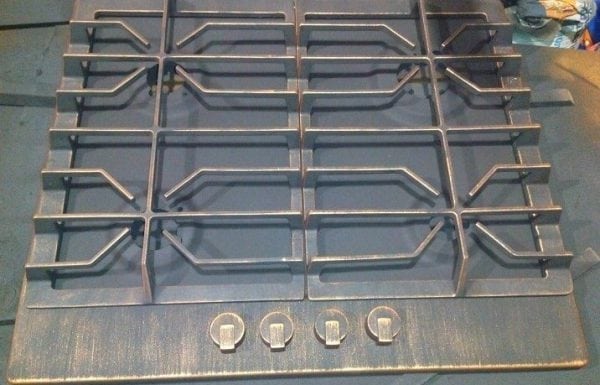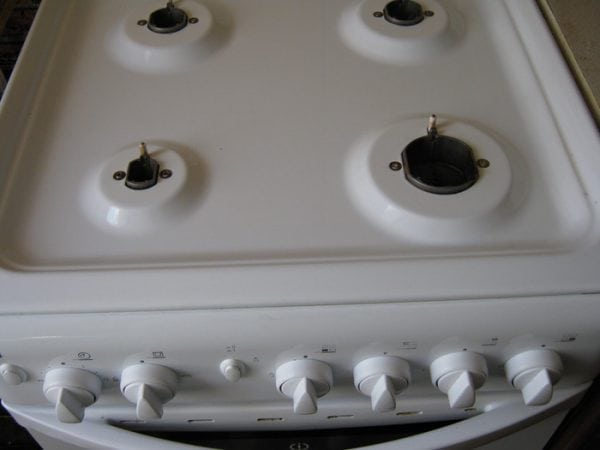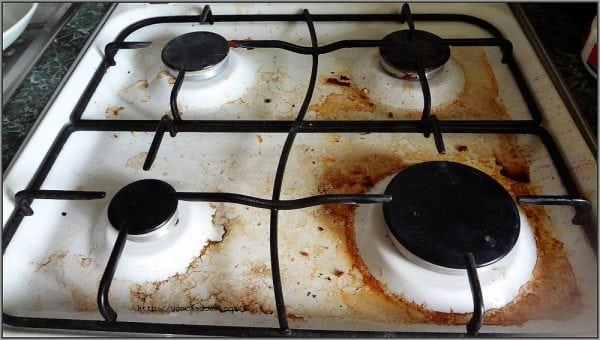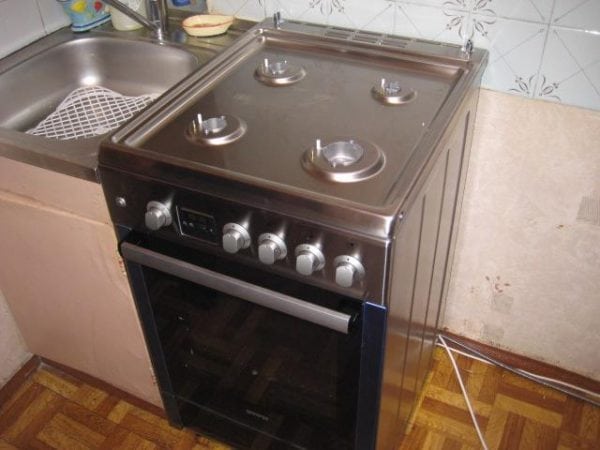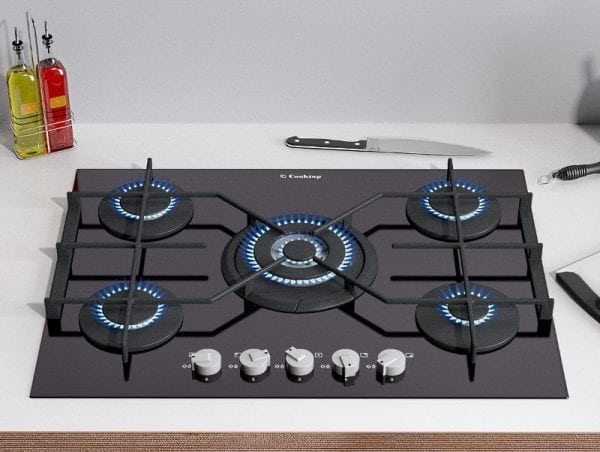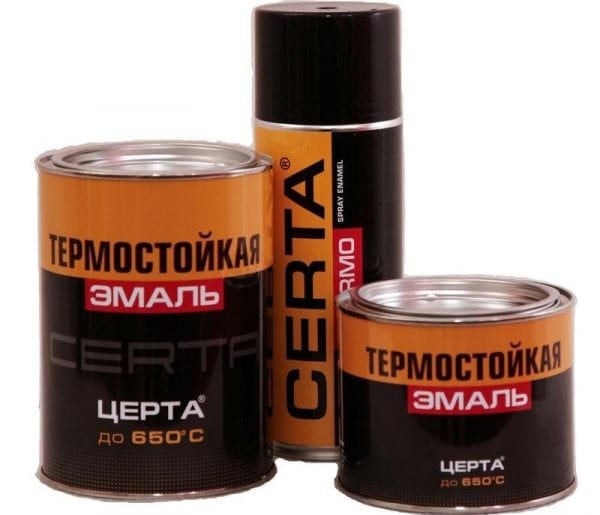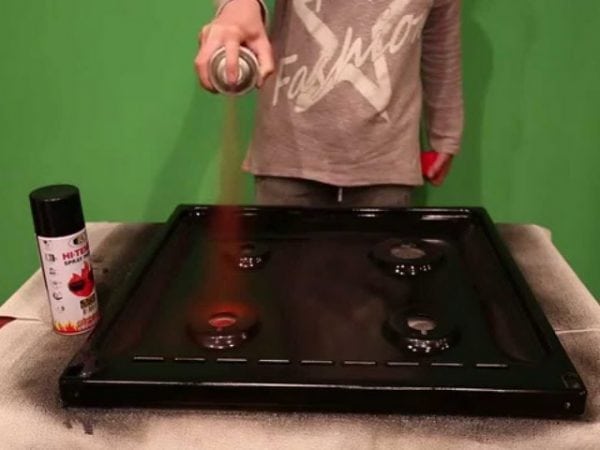Coating a gas stove over time inevitably loses its attractiveness and protective properties. Under the influence of many factors, peeling and cracking of the paint occurs, chips appear from random mechanical influences. Sooner or later, the question arises of how to paint a gas stove and whether it can be done at home.
- Features of plate coatings
- Enamel coating
- Stainless steel
- Ceramic coating
- Suitable paints
- Painting works
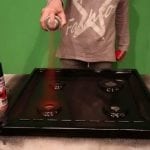
Features of plate coatings
First of all, you need to decide on the material with which the gas or electric stove is covered. Alloy steel is used as the structural material for the heating device. However, an additional layer is applied over the base, performing both decorative and protective functions.
Three coating options are used for plates - enameled, stainless steel and ceramic.
to contents ↑Enamel coating
Enamel is highly resistant to high temperatures. Enameled coatings protect the base from other adverse environmental influences, including moisture.
In the manufacture of plates, enamels of two varieties are used:
- For internal coatings. The main task of such enamels is to protect the base from the effects of high temperature, protection from mechanical damage and chemical reactions.
- For exterior coatings. Enamel must be resistant to mechanical stress and aggressive chemicals. The outside of the slab should have an aesthetic appeal.
The enamel contains such components:
- quartz sand;
- soda;
- borax;
- feldspar
As a result of mixing these components, a homogeneous transparent composition is obtained, to which a whole series of materials are added:
- aluminum oxide;
- fluorides;
- lead;
- zinc;
- several types of alkalis;
- titanium.
To improve the adhesive properties of enamel, expensive components such as nickel and cobalt oxides are added to the composition.
Advantages of enamel coatings:
- resistance to high temperatures;
- the possibility of obtaining a variety of colors;
- low cost of enamel;
- resistance to pollution.
Enamel disadvantages:
- difficulties with removing carbon from the coating;
- not the highest resistance to mechanical stress, the possibility of chips.
Stainless steel
A stainless steel is considered the best option for a plate. In the manufacture of hobs, two types of surfaces are used - matte or polished.
Advantages of stainless steel coatings:
- attractive appearance of the product;
- ease of cleaning from pollution (and you can use almost any, even the most aggressive chemical substance).
The disadvantages of stainless steel:
- the visibility of spots on the coating (even the smallest, for example, fingerprints);
- high cost of metal.
Ceramic coating
Ceramics is a combination of inorganic materials with the addition of mineral additives. To cover the cooking surfaces use ceramic glass.
This material is characterized by a number of important qualities:
- high resistance to temperature influences;
- resistance to mechanical damage (at home we are talking primarily about accidental shocks that lead to chips);
- appearance appeal;
- hygiene;
- ease of coating care.
to contents ↑Note! When choosing a hob, it is recommended to look at the integrity of the coating. If it already has chips, most likely, we are talking about low-quality materials. In the future, the problem will only worsen.
Suitable paints
Before painting the electric stove, you need to choose the right paint. Heating equipment is exposed to all kinds of influences (thermal, chemical, mechanical). If the paint and varnish composition does not meet the objectives, the coating will not only quickly lose its external attractiveness, but will cease to protect the base material, which will lead to its destruction.
The paint must meet a number of specific requirements dictated by the operating conditions of the equipment:
- The paint for the gas stove must be heat resistant. An example of a suitable paint is Polystyl.
- The recommended method of applying paint is spraying. This will allow you to distribute the paint as evenly as possible. It is spraying that reduces the consumption of paint material. Thus, a suitable enamel for a gas stove must be packed in a spray can or a spray gun will be needed to apply the composition.
- Resistance to high temperature is the most important parameter. However, overdoing this quality is not worth it. There is enough paint that can withstand up to 500 degrees. In reality, the temperature of the heating plate rarely exceeds 70 degrees.
Painting works
You can paint the stove with your own hands.
To do this, you need the following set of materials:
- surface degreasing agent (acetone or other solvent);
- masking tape;
- heat resistant paint.
Instructions for completing the work:
- Inspect the surface for defects. If there is chips, remove the entire layer of old paint. This is necessary so that there is no relief on the surface. If the surface is flat, it is recommended to leave the old paint coat.
- Degrease the surface.
- Remove oil or grease stains, traces of rust, any other dirt. Without this, restoration of enamel is impossible, since good adhesion cannot be achieved.
- In order not to stain foreign surfaces, it is recommended to cover them with paper or plastic wrap.
- If you have to apply paints in several colors, it is advisable to use adhesive tape, which will allow you to separate surface areas. In order to ensure the most accurate application of paint, the spray can should be kept at the border areas approximately 10 cm from the applied coating. When applying paint to other areas, the distance between the spray can and the surface should be 20 - 25 centimeters.
- Before applying the paint, it is recommended to shake the spray can. As a result of shaking, a uniform distribution of the composition over the tank and uniformity of its consistency are achieved.
- Painting work may only be carried out in a well-ventilated area. The optimum air temperature is 18 - 25 degrees Celsius.
- About 3 to 5 minutes after applying the primary coat of paint, a second stain should be performed. An extra layer will increase the color depth and mask old spots. In addition, a second coat of paint will enhance the protective properties of the coating.
Advice! Paint should be removed in the open air, as particles have the peculiarity of scattering and settling on furniture and other interior items.
To paint the electric stove, you need to follow the same algorithm as in the case of gas stoves. The only difference is that you need to act more delicately, since the cooking surface of electrical appliances is less resistant to external influences.

